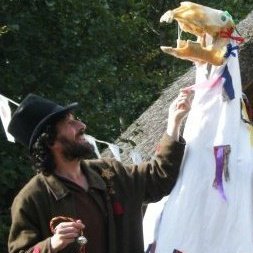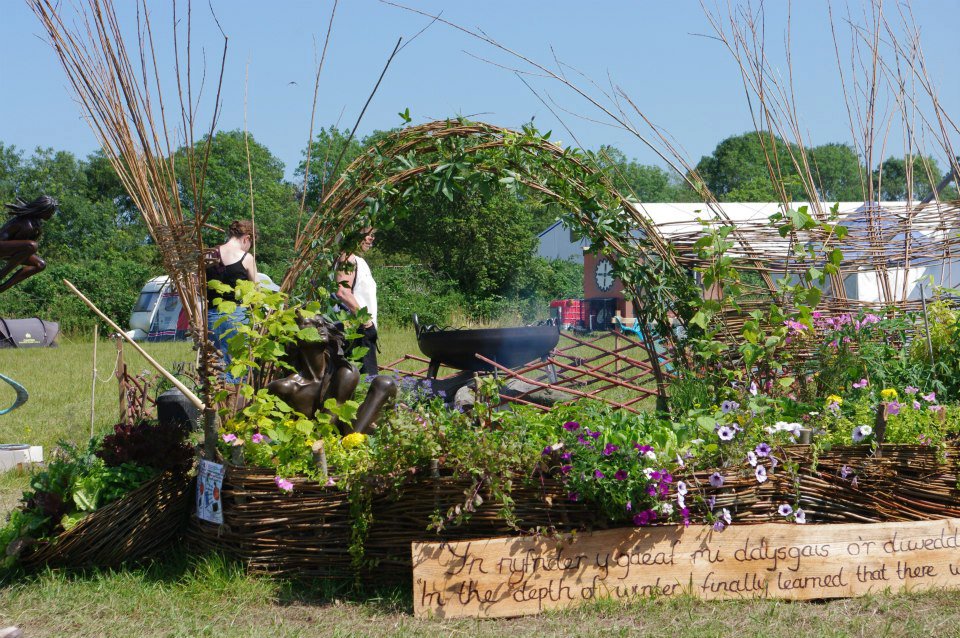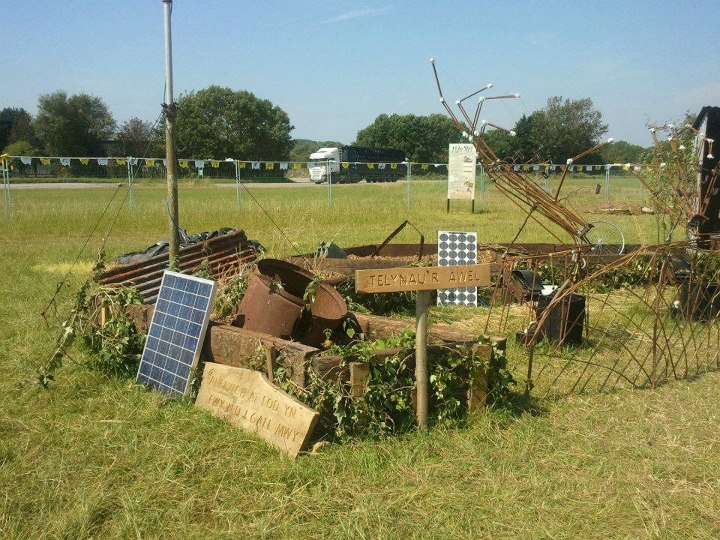Blogs
| |||||||||||||||||||
Italian Cream Cake
1/2 cups margarine
1 1/2 cups sugar
1 cup buttermilk
1 teaspoon vanilla
1/2 cup shortening
5 eggs separated
1 tablespoon baking soda
2 cups sifted flour
1 (4 oz) can coconut
1 cup chopped nuts
Preheat oven to 350 degrees. Grease and lightly flour three 9 inch cake pans or 9 X 13 pan. In a large bowl combine shortening and margarine add sugar, cream, egg yolks one at a time beating well after each addition. Combine buttermilk, baking soda and vanilla. Add alternately with flour, beginning and ending with flour. Blend in coconut. Beat egg whites until stiff peaks form. Fold into batter. Pour into pans and bake 30 - 35 minutes. Cool completely then frost as follows.
Cream 1/2 cup margarine, 1 (8 oz) package of cream cheese. Blend in 1 lb powdered sugar and 1 cup chopped nuts. Frost Cake.
Sweet Potato Casserole
4 cups mashed sweet potatoes
1/2 cup sugar
1 teaspoon vanilla
1 stick butter, melted
2 eggs
1 teaspoon cinnamon
1/2 teaspoon nutmeg
1/8 teaspoon cloves
Mix ingredients in order in mixer. Place in greased dish.
Topping
1 cup light brown sugar
1/2 cup plain flour
1 cup chopped pecans
1/3 cup soft butter
Bake at 350 degrees for 45 minutes
An absolutely fundamental requirement for any writer is to discovertheir own. identity,their own unique voice. So many aspiring authors out there are focusing solely on becoming the next J.K. Rowling or attempting to mimic the success ofFifty Shades of Grey. What you write must firstly reflect who you are. Who you are will determine what genre or genres you are most comfortable with. What genre you choose will define your audience or readership. Whatever other people think or whatever the current trend might be should not influence or deflect you from being who you really are.
 Ceri Shaw left his native Wales to live in America. Having a strong sense of identity led him to create, along with his partner Gaabriel, the website AmeriCymru. I will let Ceri speak for himself as someone who has most emphatically 'to his own self been true'. It might be a good idea to take a quick tour of AmeriCymru before reading the interview.
Ceri Shaw left his native Wales to live in America. Having a strong sense of identity led him to create, along with his partner Gaabriel, the website AmeriCymru. I will let Ceri speak for himself as someone who has most emphatically 'to his own self been true'. It might be a good idea to take a quick tour of AmeriCymru before reading the interview.
Q: What inspired you to get AmeriCymru up and running given all the hard work that it would inevitably entail?
 In retrospect I suppose there were three reasons. I had been involved in a small way with web design and site development before AmeriCymru and I relished the challenge of promoting a site with a name that would be unpronounceable and unintelligible to most people here in the States and that bore no discernible relation to the relevant keywords. There was also an element of hireath of course. I realised that I was 6000 miles from home and that a site like this would afford many opportunities to keep up with people, events and ideas back home.
In retrospect I suppose there were three reasons. I had been involved in a small way with web design and site development before AmeriCymru and I relished the challenge of promoting a site with a name that would be unpronounceable and unintelligible to most people here in the States and that bore no discernible relation to the relevant keywords. There was also an element of hireath of course. I realised that I was 6000 miles from home and that a site like this would afford many opportunities to keep up with people, events and ideas back home. We're working on a plan to expand our content over the next year with even more on Welsh writers, poets, musicians and other artists than we've already got and articles on Welsh history and profiling Welsh emigrants outside Wales. We'll be taking a look at what we can do that could be a resource for Welsh societies and groups also what we can do to benefit individuals - education? Community? Genealogy? We'll also be expanding the online eisteddfod we do. This year's online competitions are open for entries in short story ( http://americymru.net/group/west-coast-eisteddfod-online-short-story-competiti ) and poetry ( http://americymru.net/group/2012-west-coat-eisteddfod-online-poetry-competitio ) until September 30th. Next year we want to increase the prize money and spend a lot more time promoting these competitions. We plan on changing the live event we do but there will still be a West Coast Eisteddfod live event.
In passing I'd just like to encourage any writers of short stories or poetry to take a look at the competition pages linked above. There is still time before the deadline for entries and your participation is welcome. If the rules seem in any way confusing please feel free to email me at americymru@gmail.com
 Maybe if AmeriCymru had not consumed my energies for the last four years I would have got around to putting pen to paper by now. One of these days ( and soon ) I must. I would hate to resort to repeating platitudes about the evils of procrastination at this point and I wont, for fear of being labelled a hypocrite.
Maybe if AmeriCymru had not consumed my energies for the last four years I would have got around to putting pen to paper by now. One of these days ( and soon ) I must. I would hate to resort to repeating platitudes about the evils of procrastination at this point and I wont, for fear of being labelled a hypocrite. The first line of the novel that I will never write is this..."There is nothing that I want to do."

| FREYA 800 A.D. | "Stunning first book in a new historical series." Freya lived more than a thousand years ago at the beginning of the Viking raids on Britain. Home was a longhouse, one of several in the settlement; a stockade protected the small community from bears and wolves roaming the vast glacial wilderness.Freya's husband, Olaf, hungered for wealth. He sailed the longship, Odin's Thunder, across the Norse Sea to wreak havoc on the Picts of northern Britain. Freya, haunted by images of her husband's rapine and cruel infidelity, prays to pagan gods for his return. With the settlement almost deserted, Knut, a man of the mountains with a warped and cruel mind, crossed the threshold of Freya's longhouse, with devastating consequences. In a dreadful twist of fate, Freya is forced to live in isolation. It takes all her willpower to survive a dark and frozen winter with only Brock, her favourite hound, for company. When Olaf had been missing for two winter seasons, Freya sailed to the shores of Britain to find him. Betrayal and tragedy lie ahead. Signed copies available contact: jean@jeanmead.wanadoo.co.uk |
THE WIDOW MAKERS  | Jean Mead's novel The Widow Makers is inspiring reading: a classic tale, full of all the ingredients which make for the finest of novels. Based in the mid-19th century, it tells the story of the young Standish family, who move from the coalfields of Lancashire to the slate quarries of North Wales in search of a better livelihood. Daily life is much like their Welsh neighbours': death comes in the cruellest form to the village, but those who remain thrive, despite desperate poverty, barbaric working conditions and the cruel winter climate. The eldest Standish boy, Tommy is something of a changeling; he desires a different life and ruthlessly goes in pursuit of his dream of the grandeur and riches of the landowners' class. Mead's exceptional talent as a raconteur lets us share the family's emotional rollercoaster ride, as they lose their eldest son, as he grasps the riches that are so important to him, regardless of the hurt and misery he causes his family and anyone who dares to step in his way. Joe, his father, is a gentle giant of a man and through his eyes we see the beauty and majesty of the Welsh countryside, thus giving this book a greater substance. My only criticism of The Widow Makers was that it ended too soon; I felt bereft! A sequel please |
| Fan's of Jean Mead's first novel in the Widow Makers series will love this, the second in the saga of the mining Standish family. Set in the mid-19th century, it continues the tale of the family's fortune in the slate quarries of North Wales. The eldest son Tommy Standish is now the hard and ruthless manager of the Garddryn Quarry, while his father Joe and younger brother Frank are quarrymen. The family find themselves pitted against each other as Joe fights for fairer working conditions and pay for his fellow workers, while Tommy is determined to grind every last bit of sweat and toil out of them to further his own ambitions and wealth. A nasty character through and through, Tommy treats everyone equally badly - from his depressed and opium addicted wife Henrietta to his young son Edward and his parents, who remind him of his embarrassingly humble upbringing. You find yourself caught up in the struggle of those he is oppressing, hoping that his scheming will be foiled and that someone will stand up to him, as Jean Mead sweeps you along with her vivid descriptions of 19th century life and the harshness and beauty of Snowdonia. A compelling vivid account that leaves you finishing the last page with regret and hoping for more. | |
| You can visit Jean's Website HERE | |
We wish Jean every success in the future. Continuing with our Welsh theme here are some more mutual Twitter followers who are also Welsh authors or authors based in Wales.
| Click on each authors image to visit their blog. Hopefully they will all decide to join AmeriCymru. Here are some of their excellent books. |  | ||||
 |  |  |  |  |  |
 |  |  |  |  |  |
 |  |  |  | ||

Eirug: Back in the late 1990's, and when I started to contemplate the possibility of retirement, I found that my life long enthusiasm for micro-electronic research was gradually being replaced by a curiosity over what had been published in Welsh within the United States. One of the things that became immediately apparent was a need to compile a list of such publications, both books and pamphlets, and the fruit of that labor eventually appeared in the 2003 issue of Llen Cymru. Often noted at the beginning of copies of such books in Harvard University's possession were the names of former owners, many being well known figures in Welsh American circles of the 19th century, but invariably residing in the northern states. What eventually led to the present study was a curiosity over the surprise finding that a significant number of the donated books had come from a relatively unknown miner who happened to reside in Coal Creek, Tennessee.
AmeriCymru: Do you think that the Welsh contribution to the building of the United states has been adequately recorded or recognized?
Eirug: To a large extent the Welsh are an unknown factor. Take the early Quakers as an example, and while their 40,000 acre Welsh Tract is often referred to in older historical texts, no mention is made of how their ill-fated attempt at preventing its break up led to a far more democratic way of governing Pennsylvania. Occasionally one hears of how many signers of the Declaration of Independence were Welsh but nothing is heard of how their background had propelled them to take such a perilous step.
AmeriCymru: Your book introduces the reader to a number of fascinating characters. The name Samuel Roberts springs to mind. What can you tell us about him?
Eirug: Even though Samuel Roberts remains as a much admired figure in Wales, it appears that he was not the most practical of individuals. Given that he had relatives in Cincinnati it is not unreasonable to find that he should visit the city on the way to Tennessee. What is more difficult to figure out is why after sailing to Maine he would make his way to Cincinnati by travelling through Canada.
Worthy of the same recognition as him, but unfortunately long forgotten, would be their second minister in Knoxville, Iorthyn Gwynedd. His lone stance on behalf of Wales in the 1847 government report referred to as The Blue Books is remarkable and it stands as a fore runner to what The Welsh Language Society are still striving for in present day Wales.
On the mining side, one of the more appealing individuals was the Phillip Ffransis whose expertise was called upon during the Fraterville disaster and when over 200 miners lost their lives. In one passing remark he mentions how he and two or three others would occassionally gather to socialise outside one of their Dowlis homes. Sometimes I cant help but speculate how I would have fared if only I could have sneaked up and joined in their discussion. Presumably all would be well, but then not coming from their area of Wales, the odd unfamiliar word would creep in and become the subject of some humorous ridiculing.
AmeriCymru: What can you tell us about the 'Dixie Eisteddfod'?
Eirug: Poetry competitions are an important feature of any eisteddfod and the failure to locate the winning entries at both Knoxville and Chattanooga proved to be a bitter disappointment.
What is quite remarkable is the distance some were prepared to travel to get to Knoxville or Chattanooga, and without the attraction of an eisteddfod, many would never have visited either city. With many an eisteddfod in other parts of the country, it was not unusual to find that they had managed to get the railroad companies to issue half price tickets.
AmeriCymru . To what extent have Welsh traditions been preserved in Tennessee?
Eirug: The Welsh Society in Knoxville, which dates from the 1890s, still exists and many of its members, who take great pride in their Welsh background, have been extremely forthcoming with their information. With the aid of the Coal Creek Watershed Foundation the historic Welsh Church in Briceville has recently been restored and several historic markers have been placed in its vicinity.
Students at Briceville Elementary School still hold their Dixie Eisteddfod competitions, the next one to be held on May 17, 2013 as described at Fort Anderson Dedication to dedicate the listing of Fort Anderson on Militia Hill on the Natural Register. Students will participate in an essay contest to document the oral history of the Coal Creek War and a recitation of The Snark.
AmeriCymru: Do you have plans to embark on any further historical research?
Eirug: Here I'll take the liberty of mentioning what is already available. Though written in the Welsh Language, the first of the titles, Y Cymry ac Aur [Gold] Colorado, could prove suitable for learners. This was folloed by Gwladychu [Pioneering] y Cymry yn yr American West and more recently Helyntion [Tribulations] y Cymry yn Virginia.
One of the many problems encountered on writing in English is that the original Welsh eventually gets lost. One of the first American poems to be written in Welsh is a song of rejoicing on being in Pennsylvania. It dates from 1683, a year after the Quakers first arrival, but all that remains available is a very non inspiring translation. For such reasons the original Welsh quotations have been retained in the present volume, and for those learning the language, it could prove an interesting challenge to come up with an improved English translation As to any future writing, and whether it be in Welsh or English, well just have to wait and see.
Interview by Ceri Shaw
I have a little Satnav,
It sits there in my car.
A Satnav is a driver's friend,
It tells you where you are
I have a little Satnav,
I've had it all my life.
It isn't like the normal ones -
My Satnav is my wife
It gives me full instructions,
Especially how to drive -
"It's thirty miles an hour", it says,
"You're doing thirty five."
It tells me when to stop and start
And when to use the brake,
And tells me that it's never ever
Safe to overtake.
It tells me when a light is red
And when it goes to green -
It seems to know instinctively
Just when to intervene.
It lists the vehicles just in front
And all those to the rear,
And taking this into account
It specifies my gear.
I'm sure no other driver
Has so helpful a device,
For when we leave and lock the car
It still gives its advice!
It fills me up with counselling
Each journey's pretty fraught,
So why don't I exchange it
And get a quieter sort?
Ah well, you see, it cleans the house,
Makes sure I'm properly fed,
It washes all my shirts and things
And - keeps me warm in bed!
Despite all these advantages
And my tendency to scoff,
I do wish that once in a while . . .
I could turn the damned thing off.
(If my wife is listening I am NOT the author. Heaven forbid!)
In the coming days, you should be aware>Do not open any message with an attachment called: "Invitation FACEBOOK"
Regardless of who sent it, it is a virus that opens an Olympic torch
and burns the whole hard disc C of your computer.>
This virus will be received from someone you have in your address book
That's why you should send this message to all your contacts.
It is better to receive this email 25 times than to receive the virus and open it.
If you receive email called: "Invitation FACEBOOK", though sent by a friend,
do not open but delete it immediately
CNN said it is a new virus discovered recently
and that has been classified by Microsoft as the most destructive virus ever.
It is a Trojan Horse that asks you to install an adobe flash plug-in.
Once you install it, it's all over.
There is no repair yet for this kind of virus.
This virus simply destroys the Zero Sector of the Hard Disc,
where the vital information of their function is saved.
THE INFORMATION HAS BEEN CHECKED WITH SNOPES
National Eisteddfod - Interview With Organiser of Maes Gwyrdd Nathan Williams
By Ceri Shaw, 2012-08-28
.
AmeriCymru member Nathan Lewis Williams is a freelance musician, sound engineer and music promoter working mostly in Glastonbury, England. He is a fluent Welsh speaker and was raised in Coedpoeth in North East Wales. He sings Welsh traditional music and translates Welsh poetry into English. This year he organised the first ever Green Field ( Maes Gwyrdd ) at the National Eisteddfod held on the Vale of Glamorgan between August 4th and 11th. AmeriCymru spoke to him about the event.
AmeriCymru: Croeso i AmeriCymru Nathan and many thanks for agreeing to this interview. Can you introduce the Maes Gwyrdd for our readers? What is its mission statement?
Nathan: Thanks for the welcome. It's great to be able to connect with our American family across the water! To answer your question:
One version of our mission statement is from the front page of our programme this year:
Maes Gwyrdd: past, present and possible futures. A place where ancient culture and traditional skills may inform new perspectives and technologies. A place on the boundary of our familiar world and emerging realities. Somewhere that invites us to contemplate and consider what hopes and questions, qualities and visions we may have for a viable future together on this, our priceless Earth.
Also, our full consitutional aims and objectives, and plenty of other details, including the programme of our activities this year on the main "e-Coleg" stage, are available on our website (which now needs updating somewhat - bear with us! - www.maesg.org.uk
AmeriCymru: What for you, will be/were the highlights of this years Maes Gwyrdd?
Nathan: Every talk at the e-Coleg was a revelation; we had some dedicated speakers of real insight and passion and it's very difficult to choose highlights from what was an amazingly varied and quite erudite programme of lectures: see our website for the full line-up. I loved the talk on Iolo Morganwg, pioneer of the Eisteddfod's Bardic Order, the Gorsedd, by Emeritus Professor Geraint H Jenkins - Iolo came across as a spirited radical and proto-ecologist who might have enjoyed the atmosphere of our Green Field had he been there to see it (some people even thought, in some spiritual sense, that he was!). Bob Evans' history of early Welsh harp music, with musical performances from his Crwth and vocals duo, Bragod, took things right back to fundamental, Pythagorean harmonic principles and was very accessible and well received. And on the political side, Jill Evans, European MP and Plaid Cymru advocate was both realistic and visionary in her call for a Green Revolution worldwide to counter the many economic and social problems we face today.
Musically, we had intimate and poetical performances from Gwyneth Glyn, Twm Morys and Gwilym Morus, all personal favourites of mine, and some new blood performing for almost the first time, including new band "Plu" who may make quite a stir if they keep going as they are, and Caradog and Aneurin on harp and guitar (the former also a younger member of Cymru Radical who closed the event for us with a talk on their experience of the Occupy Movement). We also had an outdoor stage on an old (prototype, painted green) Ifor Williams trailer, with battery powered guitar amps (rechargeables of course) providing enough volume for an intimate audience. Gai Toms and Plu were highlights here.
Many traditional crafts including boat making, willow sculpture, wood turning and - very popular these days - yurt making. Many of our structures were yurts, which were new to much of our Eisteddfod-going audience, including our impressive 60 foot yurt which housed the main e-Coleg stage. Seeing people's reactions to that beautiful structure - including the Eisteddfod organisers themselves - was a real highlight in itself, as was the reaction to our beautiful sculptures: a cauldron, labyrinth, wind harp sculpture, Iolo Morganwg willow sculpture and more, created by Coed Hills Rural Artspace Community from the Vale of Glamorgan and their associated artists. Photos of all this can be seen at our facebook site, Maes Gwyrdd 2012 also accessible via the front page of our website.
AmeriCymru: We learn from your website that - "The intention at Maes Gwyrdd will be to power everything on our area of the Eisteddfod field using renewable energy," How will you achieve this goal?
Nathan: We did - almost - achieve this goal. We ran our office from the battery of an electric car (made in Wales) supplied by Dragon Cars; these can in priciple be charged from renewable sources, of course! We ran the sound system and most of our Powerpoint projection at the e-Coleg from solar panels and a bank of batteries, which worked very well. Unfortunately we found that a bright projector, which was needed - ironically to counter the sunlight which powered the panels - used slightly more "juice" than we had, so we had a back-up power feed from the Science (Gwyddoniaeth) building nearby - diesel unfortunately! We hope to solve this by next year by:
1) Blacking out our slideshow area more effectively, enabling us to
2) Use a less powerful projector and
3) Programming fewer talks. There were a lot!
Next year we intend to focus more on music, and a little less on lectures; sound requires less power than a slide projector, especially as we tend to focus on folk music and acoustic instruments - not too much volume or bass - thus a P.A. amp using less than 30W can easily fill a performance space, and not drain batteries too much.
We also used solar panels to charge the batteries that powered the amps for the wind harp sculptures, and battery powered amps for musicians on the Garden Stage (Llwyfan yr Ardd). It never ceases to amaze me that you can put three musicians, i.e. two mics and a guitar input into one small battery powered amp (if you have the right splitters and adaptors) and it's plenty loud enough - as long as people are listening. Part of our "small is beautiful" aesthetic goes hand in hand with the emphasis on folk music: small, intimate audiences who are listening do not require big P.A.'s to blast across loud talking and drinking (which is what happens on the Eisteddfod's music stages elsewhere on site).
This is not to say that you can't get lots of volume from solar power - I've seen it done well by the Triban and Small World solar stages in the U.K. for example - though it's in fairly short bursts usually, and requires using speakers with low resistance and watching power consumption quite carefully. We'll aim to move more in this direction next year so that we can put louder bands (drum kits etc) on if necessary. Watching one's power consumption is an interesting way of looking at how we use technology - quite essential when using solar rigs for stages - and I am increasingly enjoying learning which of my various amps use lots of wattage and which don't, by using a measuring device easily purchased; often when we rely on the National Grid or easy diesel generation we take for granted having as much power as we need, and more if you count wasted power through leaving things switched on... Having to limit one's consumption actually makes one more aware, which can then filter into an awareness of how much we unnecessarily lose, or waste, in our everyday 240V lives.
AmeriCymru: Care to tell us a little more about the ecological workshops and crafts activities that were/will be available on the Maes Gwyrdd this year?
Nathan: As well as the crafts already mentioned, we had an acoustic music studio (again, no drum kits, but cajon, hand drums and acoustic instruments!) built using straw bales and turf - Stiwdio Gwellt Hafod, whose website ( stiwdiogwellt.com ) now has tens of recordings made during the 8 days of the Eisteddfod by some of Wales' best rock and folk performers, including young bands and older figures such as Tecwyn Ifan. Permaculture Wales brought a huge turf recreation of a mountainside in Pumlumon, as it would be if farmed using traditional sustainable methods. The Currach project ( www.lynneallbutt.com/2012/06/discovering-new-territories-in-a-currach.html ) displayed their hand crafted boat, similar to a coracle, which they intend to sail dawn the river Wye to the sea next year. Cwatrochos ( www.carolisides.com ) took some very strangely coloured photos in their photo booth (again, see our facebook site) of the public holding up cards displaying "What I Would Like To See"... A solar powered cinema graced us for a day, complete with ushers in fancy dress, and blew one blogger's mind (see http://www.swoosh.me.uk/en/news/swoosh-yr-ei-2012-dydd-3/09354.html ) Kids' rides included a hand-turned carousel, climbing frame, trampolines and swingboats - all good old-fashioned human powered stuff.
In terms of workshops (all through the medium of Cymraeg, of course) we had Chi Gung meditation and Capoeira ( a form of dance / martial art from Brazil), willow fishing lines and fish for kids, basket making, pole lathe wood turning, knitting, story sharing, pottery, yurt making, a bicycle powered sewing machine repairing and making clothes (Carys Hedd's "stitch doctors") - another, similar bike-powered bit of interactive fun where kids and passers by pedalled to power a turntable playing Welsh and Breton music... also our labyrinth was pretty interactive: in the centre was simply a tree, and, if you could find it, the text of a sonnet by R Williams Parry called "Propaganda'r Prydydd" (The Poet's Propaganda) in two languages which is about as magical a poem as one can find in the modern Welsh tongue. Saul, a Welsh stonemason, carved a eulogistic poeteical excerpt praising the Vale of Glamorgan by Iolo Morganwg (himself a stonemason by trade) on an oval stone sculpture set into the ground, which we hope will become a permanent memorial to Iolo in his local town of Cowbridge:
'Y Bardd yn Dychwelyd i Forgannwg wedi bod Flynyddau lawer yn Lloegr' gan Iolo Morganwg - dyfyniad
Cyfrifir hi beunydd yn frasaf o'r gwledydd,
Yn llannerch llawenydd, a'i gwenydd yn gain,
Gardd Cymru'n dra chymwys y'i gelwir, fro gulwys,
Gwlad irlwys, paradwys tir Prydain.
Dewiswyd gan Geraint H. Jenkins
'The Bard Returning to Glamorgan having been many Years in England' by Iolo Morganwg - excerpt
She's constantly counted the grandest of lands,
As a glade of great joy, bright and fair in her mirth
The garden of Wales, aptly called, Vale of sanctity;
Green country, paradise of Britain's earth
Chosen by Geraint H. Jenkins
AmeriCymru: Can you tell us a little about the e-Coleg? How do you see it evolving in future years?
Nathan: "ecoleg" is the Welsh word for ecology, and by inserting a hyphen, one arrives at a pun: an "e-College" - the "e" being our use of computerised slideshows etc, of course. The word "college" has bardic resonances, if one considers that the town nearest the Eisteddfod this year, Llantwit Major, once housed a Druidic College, many years before any Universities existed, a fact that would not have escaped that great reviver of modern Druidry, Iolo Morganwg himself. In the spirit of Iolo's pervading influence on our field, his prowess as a polymath, antiquarian and mystic as well as a practical craftsman and bard, we covered many subjects there, from the esoteric to the practical and political, taking an holistic approach whilst maintaining the highest possible standards of presentation and content.
Perhaps the most out-of-place speakers there were the politicians in their suits, who nonetheless gamely entered into the spirit of things, realising I'm sure that they were at an Eisteddfod in August holidays, with all the cultural overtones that has, and not a parliament or political rally! Nonetheless some very serious issues were covered, from fracking, wind power turbines and nuclear waste to supermarket food pricing and energy conservation; we used an historical context (including some very interesting academic lectures on medieval poetry for example) as a springboard to take us into thoughts about the ecology of the present, and a sustainable future for Wales. I hope that this formula for the e-Coleg forum - its informality combined with rigorous thought and debate - will develop and continue as the hub of our Green Field in the coming years.
AmeriCymru: Can you tell us more about the original artworks created for this year's event?
Nathan: The artworks were generally themed on ancient archetypes, in the spirit of Iolo's antiqurianism, and have been mentioned earlier. To list them again in more detail: a large metalworked cauldron over a fire (consisting of three large, slow burning elm logs) steaming away with a few herbs in it, and a single stone immersed (stone soup, anyone?!) - see a photo of it here:-
Amazing permaculture gardens, with quotes written on boards to get one thinking, designed by Michelle Fitzsimmons of ediblelandscapes.co.uk, again photos are on facebook
The wind harps were made of iron, in the shapes of hands, and each finger held a taut string, ten in all, tuned to the harmonic series on a C# with A at 432 Hz. Any musos may understand the implications of this tuning, for those who don't: C# at concert pitch 432Hz is the note traditionally used as a drone in Indian classical music, possibly because it is an octave of the solar year, 365.25 days - thus bringing Earth and Sun together in a musical union - or something. See it as you will. The interpretations, and reactions to the harps ranged from hostility and bemusement to enthusiasm and intrigue. My first feeling on seeing them (I was involved in commissioning them) was to be shocked at their ugliness, but then realised that they had a strange beauty of their own, and that they made a fascinating comment on (post-?)industrialism. Interestingly they were placed on the edge of Llandow Trading estate, and very near the site of an ancient burial mound (on Tumulus Way!). And they made a very beautiful sound. The gardens built around them by Michelle and co reflected the dystopian reality that their iron ugliness implied: old railway sleepers, corrugated iron and discarded bike wheels formed what Jill Bach, one of our founders, called a kind of "Mad Max" reality around them. As a piece of modern art, in shock value and cultural resonance they had a worthiness all of their own, though not everyone appreciated them. One radio interviewer was so rude about them during a live interview - and was plucking them as loudly and harshly as he could to make them sound as bad as possible (wind harps, my friend, wind harps, you fool!) that I found myself snatching the microphone from his hand and leaving him, for a while, with dead air (ah, the sweet sound of Cage's 4'33") until he calmed down...See facebook for photos of these harps and the "Mad Max" gardens:-
or check out the filmed interview with Jill Bach where she demonstrates the harps by gently plucking them.
The other garden, at Llwyfan yr Ardd, the aforementioned Garden Stage, was by contrast utopian and extraordinarily beautiful, and took many hours to create. The media, for some reason, were less interested in this one!
Little wind harp scultures by Bob Rowberry twinkled ar whirred in the breeze, and bronze figures of great naturalism and beauty all graced the field, particularly around the labyrinth, which, encircled also by trees, was probably the nearest thing the Eisteddfod has seen to a Druidic Grove for some time... Coed Hills did a magnificent job of pulling so many talented artists together, and our job was then to place things appropriately (Feng Shui!) so that the Green Field as a whole made coherent, and harmonious, sense.
AmeriCymru: What plans do you have for next year in Denbighshire?
Nathan: We'll have to scale it back a bit! We may not have the luxury of an Arts Council Grant for the visual side of things, and we've certainly got less space to play with. I'd like to see the e-Coleg continue, and programme more music so that we get more of a buzz going for the public, and draw people in even more. The kids' rides and acivities were very successful this year, and I'd like to see that continue. Also I'd like to develop our cafe, and source more local and organic food and offer more vegan options than we did this year. There are limitations imposed by the Eisteddfod as to what we can do food-wise but we'd like to develop that side if at all possible. Without as much support from Coed Hills, and their director Rawley in particular, we'll be building a new team to run things; and Maes Gwyrdd will inevitably have to re-invent itself from year to year as it travels from South to North, and back again. The idea is that a local cultural network centre, or centres, can form the hub for organising Maes Gwyrdd as the Eisteddfod moves around Wales, and form links with Wales' national festival which can be mutually beneficial. It certainly worked with Coed Hills this year; we are seeking such a centre in the North at present, and have a few ideas, but nothing definite yet.
Personally, I'm trying right now to balance being on holiday, for the first time in a long while, with keeping up the momentum of what we've just achieved, publicising what was certainly a great success for us, and updating the website and facebook pages. The latter is a little easier to deal with, so if anyone is interested ineither seeing photos, links to other articles on line, or getting involved, please do visit Maes Gwyrdd 2012 here
AmeriCymru: Any final message for the members and readers of AmeriCymru?
Nathan: Well, it's great to hear what you guys are up to with the West Coast Eisteddfod, and if there are any links that can be made between that organisation and ours, then bring it on. I sometimes feel that those brothers and sisters on the other side of "the pond" may have something to teach us, or inform us, about fresh perspectives for Wales' own Eisteddfod. Jen Delyth has been great in allowing us to use her "Tree Of Life" design in our publicity, and I wouldn't be surprised if the Green Field, Maes Gwyrdd, makes many new friends in America, both for itself and for the National Eisteddfod itself as a whole. Diolch yn fawr, Ceri, am bob cefnogaeth hyd yn hyn. Thanks, Ceri and AmeriCymru for your support so far. I've already made contact with people here in Wales through this website so things come full circle here too!
Hwyl am y tro, a phob bendith.
Nathan Lewis Williams
Interview by Ceri Shaw
Llandudno, and 'Alice in Wonderland' - attracting American and local visitors.
Wooden sculptures of the Queen of Hearts, Alice, the White Rabbit and the Mad Hatter welcome visitors to the 'Alice Trail', along with a flower clock, and band stand.
American-based writer Cathy M. Rubin ( author of 'The Real Alice In Wonderland' book ) visited Llandudno for 'Alice Day' on May 4th 2012. The event celebrated the real Alice's 160th birthday, with Wonderland characters, a parade, and a jam-tart-eating record attempt!
There's even a hotel in Llandudno , where Alice Liddell, the inspiration for the 'Alice' character in the books, stayed in 1861 (and Cathy Rubin stayed in 2012). The census for that year (population 318) shows the Liddell family residing at what is now the St Tudno Hotel - and it is the only remaining Llandudno property with such an illustrious connection.
The owner, Martin Bland, is definitely a fan of 'Alice':
- Clare Bland, Martin's daughter, won the annual Miss Alice in Llandudno competition in 1982;
- Martin is a keen collector of 'Alice' collectibles, including books, photographs, and china, including an 'Alice' first edition book published in 1866, with its original cloth binding and pale blue end papers, and a contemporary inscription dated April, 1866; and a book, signed by Alice Hargreaves ne Liddell in 1934;
- andthe St Tudno Hotel also offers 'Alice Afternoon Tea' - award-winning afternoon teas .
So, if you ever find yourself in Llandudno, be sure to check out the 'Alice Trail' and the wooden 'Alice' statues , pick up an 'Alice' memento at Wonderland , and enjoy a refreshing 'Alice' tea at the St Tudno.
NOTE: Llandudno is a seaside town in north Wales, on the peninsula between the Great Orme and the Little Orme. It has a blue flag beach, donkey rides, Victorian pier, theatre, and funicular tramway, and offers musicals and drama at the modern Venue Cymru.

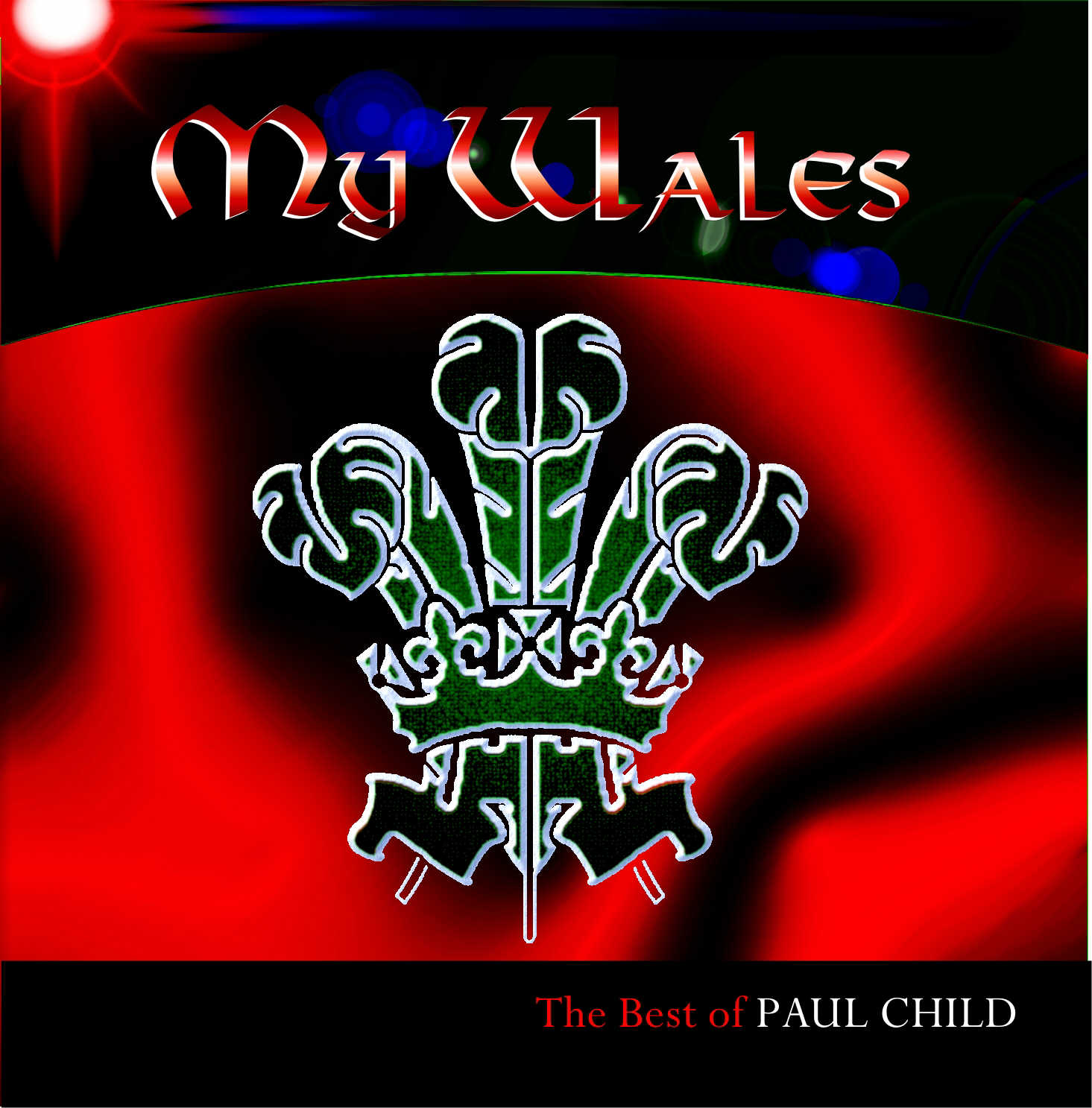
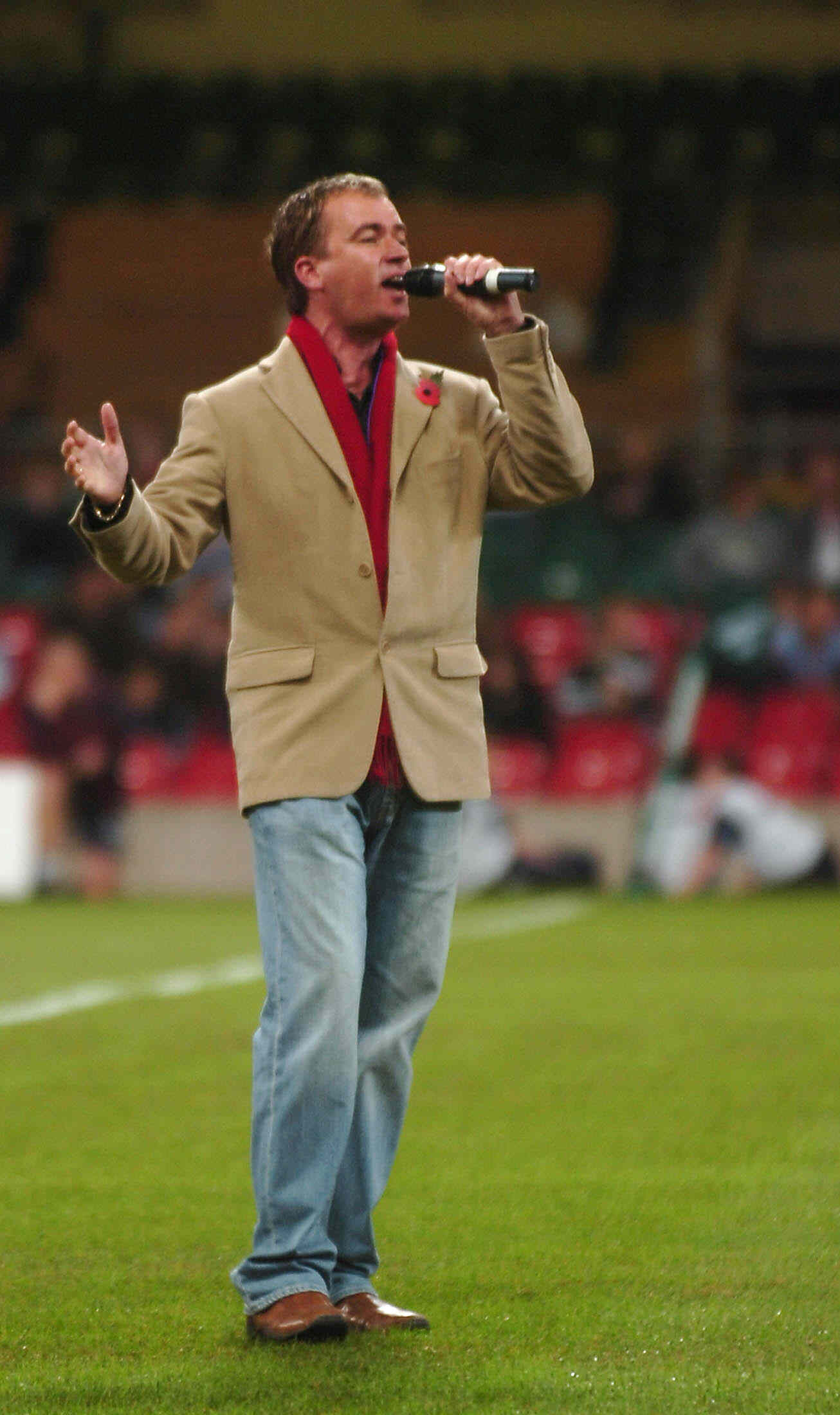

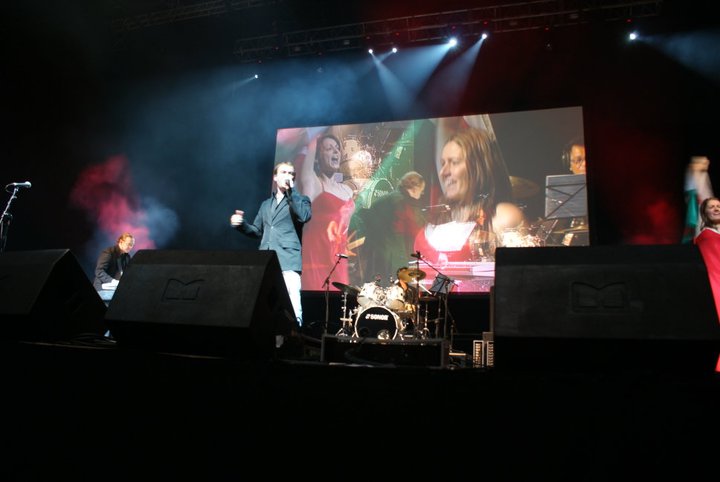




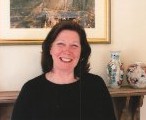.jpg)



























